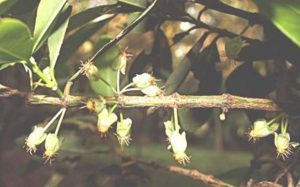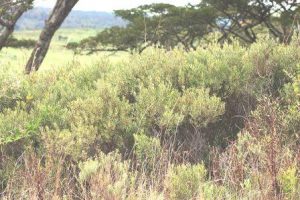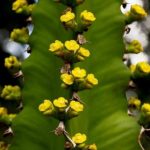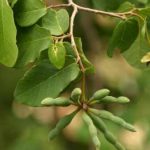TREE LIFE
MAY 1980
SPECIAL GENERAL MEETING – AT THE ABOVE, HELD AT 0935 HOURS ON Sunday 20th April 1980 it was agreed to change the name of our Society to “The Tree Society of Zimbabwe”.
MASHONALAND BRANCH CALENDAR
Tuesday 6th May : Botanic Garden walk, 1700 hours. Meet in the car park.
Saturday 17th/Sunday 18th May : Weekend trip to Umniati. For details see April Newsletter. There may still be a few seats available on the bus. Contact Lola Irvine on 21362.
To recap, the bus leaves at 0800 hours from the Monomatapa car park. Bring stretchers, sleeping bags and picnic lunch for Saturday. Pool and other sports facilities will be available. Price $14, inclusive of transport, Saturday supper, Sunday breakfast and lunch and of course, accommodation. Please pay Mrs Irvine before 14th May. Most important, please remember to take anti malarial precautions. There is a very real danger, especially with the late rains.
The committee have, thanks to the improved security situation, been able to plan ahead, and to consider places further afield than previously. The following is the proposed calendar for 1980 (3rd Sunday outings), but subject to change if any problems arise.
June 15th Hallam Dam
July 20th Darwendale Dam, we hope a joint outing with Ayshire Branch
August 17th Lowdale Farm, Upper Mazowe
September 21st Munaka Park, Mtoroshanga/Banket. There is also the possibility of an extra September outing to the Binga
October 19th Bernard Muziki Shrine, Mucheke
November 16th Ngomakurira, Chinamora
December No outing
SUBSCRIPTIONS The treasurer is concerned that some 1980 subscriptions have not yet been received. Unfortunately, due to rising costs and our attempt to keep subscriptions low, the Society will, in future, send Tree Life and Science News only to paid up members. So please post off subscriptions, better late than never.
BOTANIC GARDEN WALK 1st April, 1980

Garcinia livingstonei, Photo: Mark Hyde Source: Flora of Zimbabwe
15 members gathered for the second “Lowveld Walk” under the guidance of Tom Muller, and species likely to be encountered on the Umniati trip were examined. Grewia schinzii, a fast growing species (in Zimbabwe collected only from the Umniati system) was in fruit. These have large rectangular leaves which distinguished this Grewia. Garcinia livingstonei, with its leaves and branches emerging in 3s, was unmistakable, and exuded the distinctive yellow sap of Garemis. Its fruit is edible, as is that of Syzygium quineense subsp. barotsense, a riverine form which is rather like a gum in appearance. Acacia fleckii, very common at Umniati, is distinguished from A.erubescens by its epidermal hook thorns, and long pinnae, up to twice the length of the rachis. New to many were the two species of Hippocratea africana and H.buchananii. The medicinal value of these is at present being studied, and their extracts may be useful in the treatment of leukemia. Dombeya kirkii was most attractive in white flower. Diospyros mespiliformis, Lannea stuhlmannii, Artobotrys brachypetalus and Manilkara mochisia, all have edible fruit. It must be more than coincidence that, as ever, when we are led by Tom, many species studied are palatable in some way, and we are grateful to him for imparting to us his valuable knowledge of bush eating! The large leafed Strychnos potatorum, despite belonging to a generally palatable fruit producing genus, should be avoided. The small black fruit is extremely unpleasant, and probably slightly toxic, personal experience. From now on I wait for Tom to try it first.
SALISBURY OUTING 20th APRIL 1980
By kind permission of Mr. John Curtis, we stomped over his farm in the Mapfeni Valley on the Arcturus Road. Led by Dr. Ken Davy, we followed the tributary river line up into the low granite range, south of the homestead. Some members made it to the high point (above the 5 100’ contour), although most found the vegetation of the slopes, and especially of the stream bed, so interesting, that there was little incentive to push all the way to the top. The going near the top was made more difficult by the scratchy vegetation, including at least one stinging nettle which turned the tables, and effectively collected the writer, rather than vice versa.
A wide variety of trees were seen, of special mention in the gully riverine fringe, Osyris lanceolata in green fruit and a tall, very glabrous Faurea saligna, growing up to the light under a Syzygium cordatum canopy. Protea angolensis made a fine display of white flowers, and Pittosporum viridiflorum was heavy with fruit. I quickly skirted around the Euclea crispa in large yellow fruit, which turned out to be Diospyros lycioides, and pose the question : has any reader made the same observation as I have, that the mountain acacia Brachystegia glaucescens, does not seem to go above the 5 000’ contour, at least around Salisbury.
After a picnic lunch, we walked to an outlying granite hill about 150’ lower that the main ridge. We recorded only a few species here, not seen during the morning, but the panoramic view from the top was worthwhile.
75 species were recorded, including real Euclea crispa on the higher slopes.

Euclea crispa. Photo Bart Wursten. Source: Flora of Zimbabwe
As a follow up to the wonderful day we had on Sunday, Meg Coates Palgrave thought that those involved in the day’s unresolved arguments may like to know the conclusions, and adds the following to George Hall’s above summary.
“Our first find was Euclea crispa – a great excitement, until we found it bearing Diospyros lycioides fruit! While they both belong to the same family, EBANACEA, it is incredible that they can look so alike. Nearby were clumps of ? Rhus/Allophylus. I collected a specimen every time someone claimed “this” was different. All were finally identified as Rhus tenuinervis, showing all the variations from what we recognize as the familiar roundish furry leaves, to narrow, glabrous ones. In trying to establish how to identify this tree other than by instinct, it would appear that the leaflets of R.tenuinervis have a scalloped or toothed margin other than towards the base, where the margin is entire. The specimens had less entire margins than the books suggest.
The trifoliate leaved specimens with tufts of hairs in the vein axils, which was collected later, was Allophylus africanus. And, of course, what we thought was Rhus longipes, was just that.
Having seen Monotes engleri on our previous outing, we felt we were experts at identifying it. I am sure you will be glad to know that we were right, and that I brought back a specimen of M.glaber, with its yellow-green appearance and obovate, inverted egg, shaped leaves, and M.engleri looking incredibly like Parinari curatellifolia, with oval leaves with pale grey under surfaces.
In the stream, near the Bequaertiodendron magalismontanum, was what looked like a very fleshy Faurea saligna, and it turned out to be just that. I brought back a specimen, and a specimen of ordinary looking F.saligna, and when I looked at them at home, they both showed the same bruising and blackening resulting from being carried about in a plastic bag – further confirmation that they were the same.
The creeper with the palmate leaf, and lovely red fruit, frequently with a few empty ones lying on the ground robbed of their pips, is Cyphostemma gigantaphyllum. It is identified by the white dots or glands on the under surfaces of the leaves, quite visible to the naked eye. Fruits of other Cyphostemma are described as edible, so Douglas Irvine tried these. It was much too diffident to taste for comment.
The only Grewia I have ever found has been G.monticola, but Sunday proved the exception. Only after everyone commented that the “Grewia looked funny” did I chuck a bit in the bag. That proved to be G.micrantha, which has not been collected in the area previously. In fact, there are remarkably few specimens of it in the herbarium, so if anyone is out there again, please would they collect a decent specimen. The one I collected was on the top of the ‘morning’ kopje. The Grewia with the 4-lobed fruit found on the ‘afternoon’ kopje was G.stolzii. Fortunately the fruit is edible, for in cleaning the seed for planting I used my mouth. It has a pleasant, sweet taste, but was not very fleshy.
There was also a tree, very heavy with fruit, that we found completely unrecognisable. This was Euclea natalensis with clean leaves, much smaller than we usually see them.
And finally, although I did not collect any leaves of the “lucky beans”, what we collected were those of Erythrina latissima. I have started the process of getting them to grow.
AYRSHIRE BRANCH – ANNUAL GENERAL MEETING
The AGM was held on the 17th February 1980 at Glen Rosa Cottage, by invitation of G. G. Moore. In his annual report the chairman said that the branch had met three times during the year, namely, a tree walk on Mr. Barron’s farm, Gomo, a consultation with Mr. Muller and Mr. Gordon on the site of the Memorial Garden at Raffingora, and a meeting at Katawa Farm to consider the recommendations of Messrs. Muller and Gordon. It was regretted that a visit to Mr. Townsend’s Munaka Park had to be cancelled.
Membership of the branch is 17, one having left, and one rejoined.
The need for a tree society is greater than ever. A lead must be given to African land owners, otherwise indigenous trees may rapidly disappear.
The Chairman, Mr. Moore, expressed his intention to retire and make way for a younger person. He concluded his report by giving thanks to members and the honorary secretary. The following committee members were elected :
Chairman Mr. D. Le Clus Secretary Mrs. B. Graves
Members Mrs Jones, Mrs Fardell, Mrs. Malan, Mrs Henderson, Mr. G. G. Moore
Calendar : Sunday 1st June 1980 : Mr. Trevor Gordon will lead a tree walk on the Ayrshire Club Golf Course at 1430 hours. Meet at the Club House. A small exhibit of wood samples will be on display.
MATABELELAND BRANCH
Sunday May 4th : To the Khami area; meet at Modern Motors, 11th Avenue at 0845 hours. This is an area which is ecologically very interesting.
Hillside Dams : visits on the second Wednesday of the month have been discontinued for the winter period
Sunday June 1st : We shall be visiting the Tshabalala Game Park to list the trees; meet at 0830 hours at Retreat Shopping Centre.
At the last meeting at the Hillside Dam area we were given interesting and much needed information on how to collect specimens of plant by our chairman, Mr. E. B. Best. Armed with secateurs, press and table set up at the base of a kopje, he went into the rudiments of collecting, leaving us wanting more. He revealed various manoeuvres in pressing to deal with lumpy specimens, he indicated the pitfalls to be avoided in recording information and touched lightly on solid and liquids which might be employed for obtaining better results. Following this demonstration we scattered over the kopje to select specimens required to complete and improve a collection at the schools’ ecology centre.
AN UNUSUAL USE FOR A TREE
We have all heard, I am sure, of the radiocarbon technique for dating samples of organic material up to 50 000 years old. To find the age of ancient organic material, the present content of radiocarbon is measured. Then, knowing the rate of decay of the radiocarbon, (half life about 5730 years) and the original content, the age of the material can be calculated. To work out the original content, it is necessary to assume that the ratio of radiocarbon (c-14) to the other carbon isotopes (c-12 and C-13) has remained constant throughout the period concerned. That this assumption was shaky was soon realised when it was found that radiocarbon dates were consistently too young when material could be dated by other means. At the limit of historical dating (about 3100 BC) the discrepancy was as much as 700 or 800 years. Some means of improving the accuracy of the radiocarbon calendar was obviously needed. One such means was provided by Pinus aristata, the bristle cone pine, which grows in the White Mountain region of California. The uniqueness of these trees lies in their annual ring system. Reflecting the weather conditions, the rings form distinctive patterns. These patterns are repeated in all the trees, so that the rings of one tree can be accurately matched with those of another. What is more, the rings of a living tree can be matched with those of a dead tree provided the dead tree was alive when the living one was young. Now, the bristle cone pine lives to a great age; up to 4600 years has been recorded. Moreover, the annual rings, besides being distinctively patterned, are easily countable. So by taking core samples from both living and dead trees and joining them at the point of match of the rings, it proved possible to achieve a continuous record of wood samples going back more than 8 000 years. These samples are, of course, easily datable by counting back to the relevant ring.
The radio carbon calendar was then recalibrated by comparing the known ages of wood samples taken from these rings with that given by radiocarbon. As I understand it the recalibration has had quite dramatic consequences for archaeology. The time scales have had to be lengthened considerably. It is now believed, for instance, that the European Bronze Age culture, was not derived from the Greek (Mycenaean) culture at all, but preceded it by many years. Another cherished belief which seems likely to be abandoned, is the vision of Druids doing unmentionable things at Stonehenge! The age of the megalithic structures of Europe, including Stonehenge, has had to be pushed back from about 1800 BC to between 2500 BC and 3000 BC. Long before the Celts entered Britain.
Not bad for a mere tree.
GEORGE HALL CHAIRMAN



